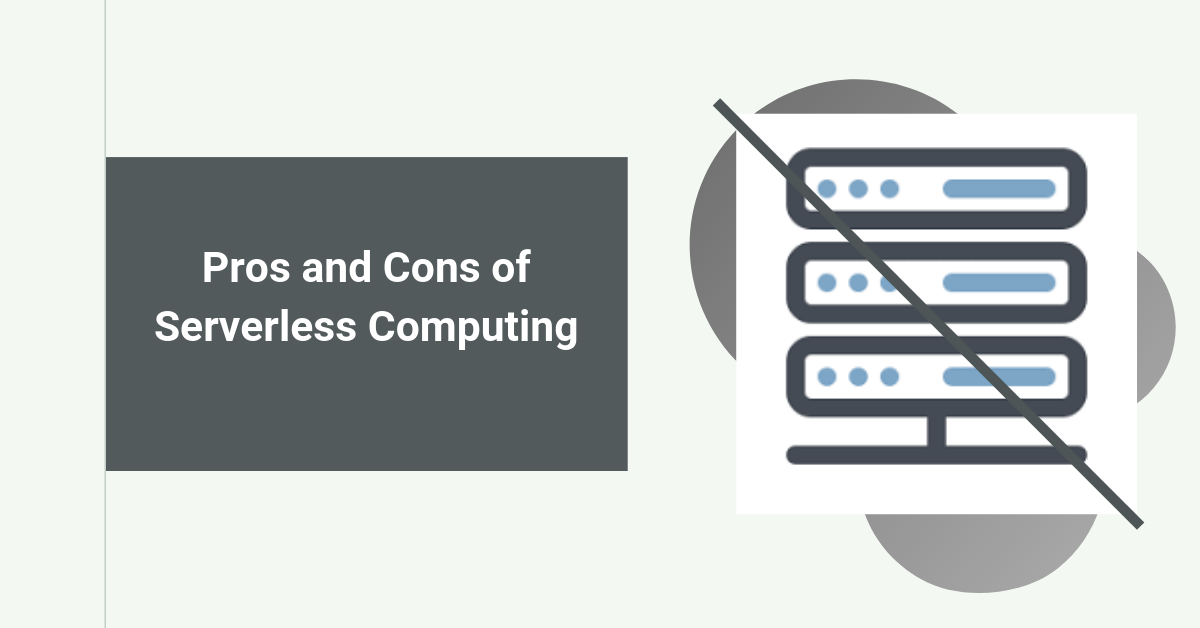Introduction:
After reading about serverless and researching about it a bit, now you are finally ready to take the leap of faith. You believe that by shifting from a traditional-server architecture to a serverless one, your business will become more optimized. However, such decisions should not be made without looking at both sides of the coin.
Like everything new, serverless brings its advantages and disadvantages to the table, which should be looked into and business processes must be matched with them, to make an informed decision.
Pros of Serverless Computing:
Image-rich applications:
Nowadays, people use a plethora of devices which have various screen sizes and resolutions. Images need to be delivered to such varying screen-sizes with appropriate resolutions to fit them. Serverless helps in making it possible and that too, quite fast. This helps in enhancing the user experience.
Easy scaling:
This is the core which makes serverless so popular right now. Serverless has gone one step ahead of the micro service paradigm and moved on to functions. Monolithic applications can’t be scaled at all, while microservices are moderately scalable. Functions, however, being tiny are immensely scalable. This relieves the developers of any anxiety stemming from sudden spikes in user numbers. Whenever new users show up, platforms automatically scale the applications (comprised of functions) to fit the demand. For example, chatbots are being used today with high efficiency with the help of serverless.
Event-driven systems:
Serverless is boon for systems in which, by implementing event-driven or scheduled triggers, processes become highly efficient and hassle-free. For example, motion-triggered recording in security cameras; periodic report generation, emergency system reports; etc. There can be endless possibilities after moving to serverless.
Low human costs:
The discomfort of moving entire data from a legacy setup to a serverless one is made even more alluring by the added benefit of low human costs. There is no need to hire anybody specifically to set up and maintain the servers. That is taken care of by the vendor.
Billing by compute time/ resource used:
The best thing about serverless hands down. This is the one thing which can bring the cost down from gargantuan figures to mere pocket change. Most of the vendors offer payment arrangements based on computing resources consumed. So, you’re billed only when an application is invoked, and stopped as soon as the application is released.
Cons of Serverless Computing:
Vendor lock-in:
Why is switching between multiple vendors such an issue for businesses? The problem is not dependency on functions, which are movable from one platform to another, but the APIs which the vendors use. These are platform-specific, and therein lies the problem. This issue can be partially mitigated, still, one should carefully consider all options. The vendor that is selected should be capable of handling all the requirements of a business.
Learning curve:
Serverless is a relatively new technology. As such it evolves constantly and it becomes difficult to keep pace with the changes while going on with day-to-day activities. Serverless developers being in short supply come at a steep price unless you know where to look .
Testing and debugging become more challenging:
In case of legacy backend setups, developers can simply build applications which are specifically designed to run on servers made by their colleagues. However, when all the backend is handled by someone else, it becomes more difficult to replicate the platform the environment in which applications are supposed to run to test and debug them. However, some vendors allow testing in sandboxes before actually deploying anything.
Security concerns:
Service-providers use the same servers to handle the processes of multiple clients. Although theoretically it is supposed to be safe, there are many third-party services on which applications depend on. These services receive data may morph it. Still, many aspects of serverless also make it more secure. For example, due to constant load and release, a server can’t stay compromised for long. Denial of service attacks become virtually impossible to carry out on serverless.
Unsuitable for long-running tasks:
When an application has to run constantly and process data at the same time, a legacy server setup might be a better option in that case and a serverless arrangement may end up paying more in the end. Also, when an application runs constantly, it would be better to know the backend set up in and out to have better command on it.
Conclusion:
By considering all these points we make these observations:
1) Serverless provides more convenience than anything previously did.
2) It has the added benefit of costing less on two fronts, human resource and running of servers.
3) It is ideal for many existing and potential solutions, but due to its constant changes, the cost is a little steep for changing.
4) May not be suitable for some systems
Regardless of this, serverless is gaining traction rapidly and is set to become a major phenomenon soon.
